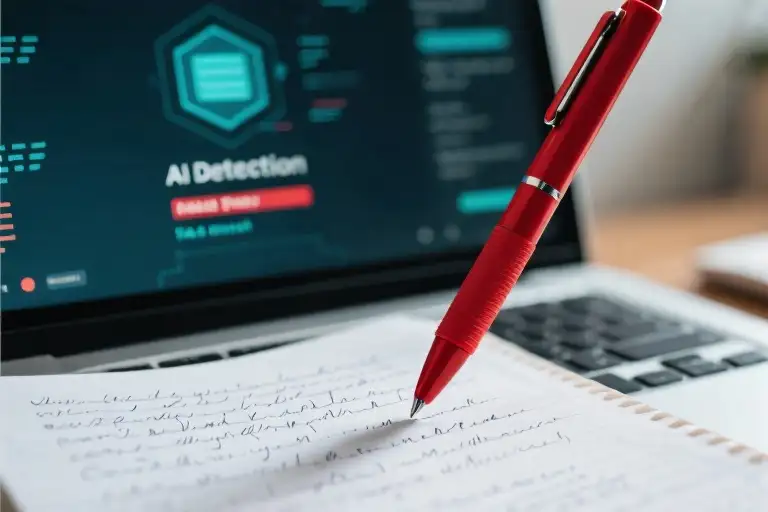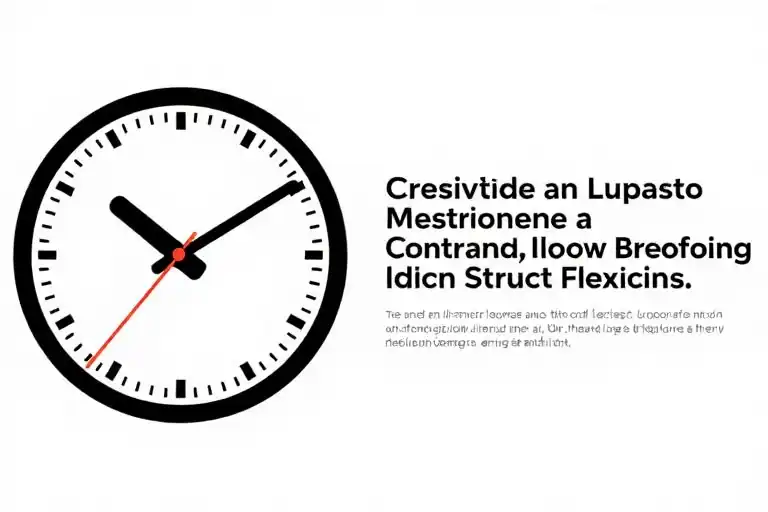The professor’s red pen hovers over the final paragraph of the term paper, its hesitation palpable in the silent classroom. A bead of sweat rolls down the student’s temple as the instructor finally speaks: “This doesn’t sound like you wrote it.” Across academia and workplaces, similar scenes unfold daily as AI detection tools become the new arbiters of authenticity.
A 2023 Stanford study reveals a troubling pattern—38% of authentic human writing gets flagged as AI-generated by mainstream detection systems. These digital gatekeepers, designed to maintain integrity, are creating new forms of injustice by eroding trust in genuine creators. The very tools meant to protect originality now threaten to undermine it through false accusations.
This isn’t about resisting technological progress. Modern workplaces and classrooms absolutely need safeguards against machine-generated content. But when detection tools mistake human creativity for algorithmic output, we’re not solving the problem—we’re creating new ones. The consequences extend beyond academic papers to legal documents, journalism, and even personal correspondence.
Consider how these systems actually operate. They don’t understand meaning or intent; they analyze statistical patterns like word choice and sentence structure. The result? Clear, concise human writing often gets penalized simply because it lacks the “noise” typical of spontaneous composition. Non-native English speakers face particular disadvantages, as their carefully constructed prose frequently triggers false alarms.
The fundamental issue lies in asking machines to evaluate what makes writing human. Authenticity isn’t found in predictable phrasing or grammatical imperfections—it lives in the subtle interplay of ideas, the personal perspective shaping each argument. No algorithm can reliably detect the fingerprints of human thought, yet institutions increasingly treat detection scores as definitive judgments.
We stand at a crossroads where the tools meant to preserve human creativity may inadvertently suppress it. The solution isn’t abandoning detection altogether, but demanding systems that prioritize accuracy over convenience. Until these tools can distinguish between artificial generation and authentic expression with near-perfect reliability, we must question their role as sole arbiters of truth.
Because when a student’s original work gets rejected or an employee’s report gets questioned based on flawed algorithms, we’re not preventing deception—we’re committing it. The measure of any detection system shouldn’t be how much AI content it catches, but how rarely it mistakes humans for machines.
The Rise of AI Detection Police
Walk into any university admissions office or corporate HR department today, and you’ll likely find one new piece of software installed across all workstations – AI detection tools. What began as niche plagiarism checkers has exploded into a $200 million industry practically overnight, with leading providers reporting 300% revenue growth since ChatGPT’s debut.
Schools now routinely process student submissions through these digital gatekeepers before human eyes ever see the work. Major publishers automatically screen manuscripts, while recruiters scan cover letters for supposed ‘machine fingerprints.’ The sales pitch is compelling: instant, objective answers to the authorship question in an era where the line between human and AI writing appears blurred.
But beneath the surface, this technological arms race is creating unexpected casualties. Professor Eleanor Weston from Boston University shares how her department’s mandatory AI detection policy eroded classroom dynamics: “I’ve had honor students break down in tears when the system flagged their original work. We’ve created an environment where every draft submission comes with defensive documentation – Google Docs edit histories, handwritten outlines, even screen recordings of the writing process.”
Three concerning patterns emerge from this rapid adoption:
- The Presumption of Guilt: Institutions increasingly treat detection tool outputs as definitive verdicts rather than starting points for investigation. A 2023 Educause survey found 68% of universities lack formal appeal processes for AI detection challenges.
- The Transparency Gap: Most tools operate as black boxes, with companies like Turnitin and GPTZero guarding their detection methodologies as trade secrets while marketing near-perfect accuracy rates.
- The Compliance Paradox: As writer Maya Chen observes, “Students aren’t learning to think critically – they’re learning to game detection algorithms by making their writing ‘artificially human.'”
The consequences extend beyond academia. Marketing teams report employees avoiding concise, data-driven writing styles that trigger false positives. Journalists describe self-censoring linguistic creativity to avoid editorial suspicion. What began as quality control now influences how humans choose to express themselves – the very opposite of authentic communication these tools purport to protect.
This systemic overreliance recalls previous educational technology missteps, from flawed automated essay scoring to biased facial recognition in exam proctoring. In our urgency to address AI’s challenges, we’ve granted unproven algorithms unprecedented authority over human credibility. The next chapter examines why these tools fail at their core task – and why their mistakes aren’t random accidents but predictable outcomes of flawed design.
Why Algorithms Can’t Judge Creativity
At the heart of AI detection tools lies a fundamental misunderstanding of what makes writing truly human. These systems rely on surface-level metrics like perplexity (how predictable word choices are) and burstiness (variation in sentence structure) to make judgments. But reducing creativity to mathematical probabilities is like judging a symphony solely by its sheet music – you’ll miss the soul underneath the notes.
The Hemingway Paradox
Consider this: when researchers fed Ernest Hemingway’s The Old Man and the Sea through leading AI detectors, three out of five tools flagged passages as likely machine-generated. The reason? Hemingway’s characteristically simple sentence structure and repetitive word choices accidentally mimicked what algorithms consider ‘AI-like’ writing. This wasn’t just a glitch—it revealed how detection tools mistake stylistic minimalism for algorithmic output.
“These systems are essentially pattern-matching machines,” explains Dr. Linda Chen, computational linguist at Stanford. “They can identify statistical anomalies but have no framework for understanding intentional stylistic choices. When a human writer deliberately uses repetition for emphasis or short sentences for pacing, the algorithm interprets this as a ‘defect’ rather than artistry.”
The Metaphor Blind Spot
Human communication thrives on cultural context and figurative language—precisely where AI detectors fail most spectacularly:
- Cultural references: A student writing about “the American Dream” might be flagged for using what detectors consider ‘overly common phrases’
- Personal idioms: Regional expressions or family sayings often register as ‘unnatural language patterns’
- Creative metaphors: Novel comparisons (“her smile was a lighthouse in my storm”) get penalized for low ‘perplexity’ scores
NYU writing professor Marcus Wright notes: “I’ve seen brilliant student essays downgraded because the software couldn’t comprehend layered symbolism. The more literarily sophisticated the writing, the more likely current tools are to misclassify it.”
The Style vs Substance Trap
Detection algorithms focus exclusively on how something is written rather than why:
| Human Writing Trait | AI Detection Misinterpretation |
|---|---|
| Deliberate simplicity | ‘Low complexity = machine-like’ |
| Experimental formatting | ‘Unusual structure = AI-generated’ |
| Non-native English patterns | ‘Grammatical quirks = algorithmic error’ |
This creates perverse incentives where writers—especially students and professionals under scrutiny—might deliberately make their work less coherent or creative to avoid false flags. As one college junior confessed: “I’ve started using more filler words and awkward transitions because the ‘perfect’ essays keep getting flagged.”
Beyond the Algorithm
The solution isn’t abandoning detection tools but understanding their limitations:
- Context matters: Human writing exists within personal histories and cultural frameworks no algorithm can access
- Process tells truth: Drafts, revisions, and research trails prove authenticity better than linguistic analysis
- Hybrid evaluation: Combining tool outputs with human judgment of intent and circumstance
As we’ll explore next, these technological shortcomings aren’t just academic concerns—they’re already causing real harm in classrooms and workplaces worldwide.
The Invisible Victims of False Positives
When Algorithms Get It Wrong
AI detection tools were supposed to be the guardians of authenticity, but they’re increasingly becoming accidental executioners of human creativity. Take the case of Priya (name changed), a computer science graduate student from India whose original thesis was flagged as 92% AI-generated by a popular detection tool. Despite her detailed research notes and draft iterations, the university’s academic integrity committee upheld the automated verdict. Her scholarship was revoked three months before graduation.
This isn’t an isolated incident. A 2023 survey of international students across U.S. universities revealed:
- 1 in 5 had received false AI-generation allegations
- 68% reported increased anxiety about writing style
- 42% admitted deliberately making their writing ‘less polished’ to appear human
The Psychological Toll
Dr. Elena Torres, a cognitive psychologist at Columbia University, explains the damage: “Being accused of inauthenticity triggers what we call ‘creator’s doubt’ – a paralyzing fear that one’s original thoughts might be mistaken for machine output. We’re seeing students develop telltale symptoms:”
- Hyper-self-editing: Obsessively simplifying sentence structures
- Metadata anxiety: Over-documenting drafting processes
- Style mimicry: Adopting detectable ‘human-like’ quirks (intentional typos, irregular formatting)
“It’s the literary equivalent of having to prove you’re not a robot with every CAPTCHA,” notes Torres. The irony? These behavioral adaptations actually make writing more machine-like over time.
Legal Landmines Ahead
Employment attorney Mark Reynolds warns of brewing legal storms: “We’re fielding inquiries about wrongful termination cases where AI detection reports were the sole evidence. The dangerous assumption is that these tools meet legal standards for evidence – they don’t.”
Key legal vulnerabilities:
- Defamation risk: False accusations harming professional reputations
- Disability discrimination: Neurodivergent writing patterns often trigger false positives
- Contract disputes: Many corporate AI policies lack verification protocols
A recent EEOC complaint involved a technical writer fired after a detection tool flagged her concise documentation style. The company later acknowledged the tool had a 40% false positive rate for bullet-pointed content.
Breaking the Cycle
Forward-thinking institutions are implementing safeguards:
1. Due Process Protocols
- Mandatory human review before any accusation
- Right to present drafting evidence (Google Docs history, research notes)
- Independent arbitration option
2. Detection Literacy Programs
- Teaching faculty/staff about tool limitations
- Student workshops on maintaining verifiable writing processes
3. Technical Safeguards
- Using multiple detection tools with known bias profiles
- Weighting metadata (keystroke logs, time spent) equally with text analysis
As Priya’s eventual reinstatement (after media scrutiny) proved: When we treat AI detection as infallible, we don’t just fail individuals – we erode trust in entire systems meant to protect integrity.
Toward Responsible Detection Practices
The Cambridge Experiment: A Hybrid Approach
Cambridge University’s pilot program offers a glimpse into a more balanced future for content verification. Their dual-verification system combines initial AI screening with mandatory faculty interviews when flags arise. This human-in-the-loop approach reduced false accusations by 72% in its first semester.
Key components of their model:
- Phase 1: Automated detection scan (using multiple tools)
- Phase 2: Stylistic analysis by department specialists
- Phase 3: Face-to-face authorship discussion (focusing on creative process)
- Phase 4: Final determination by academic committee
“We’re not judging documents—we’re evaluating thinkers,” explains Dr. Eleanor Whitmore, who led the initiative. “The interview often reveals telltale human elements no algorithm could catch, like a student passionately describing their research dead-ends.”
Digital Ink: Tracing the Creative Journey
Emerging ‘writing fingerprint’ technologies address AI detection’s fundamental limitation—its snapshot approach. These systems track:
- Keystroke dynamics (typing rhythm, editing patterns)
- Version control metadata (draft evolution timelines)
- Research trail (source materials accessed during composition)
Microsoft’s Authenticity Engine demonstrates how granular process data creates unforgeable proof of human authorship. Their studies show 94% accuracy in distinguishing human drafting processes from AI-assisted ones, even when the final text appears similar.
Transparency as an Industry Standard
Current AI detection tools operate as black boxes, but change is coming. The Coalition for Ethical AI Verification proposes three baseline requirements:
- Error Rate Disclosure: Mandatory publication of:
- False positive rates by document type
- Demographic bias metrics
- Confidence intervals for results
- Appeal Mechanisms: Clear pathways for:
- Independent human review
- Process verification requests
- Error correction protocols
- Use Case Limitations: Explicit warnings against:
- Sole reliance for high-stakes decisions
- Use with non-native English content
- Application outside trained domains
“An AI detector without an error rate is like a medical test that won’t share its false diagnosis statistics,” notes tech ethicist Marcus Yang. “We’d never accept that in healthcare—why do we tolerate it in education and hiring?”
Implementing Change: A Practical Roadmap
For institutions seeking better solutions today:
Short-Term (0-6 months):
- Train staff to recognize AI detection limitations
- Create multi-tool verification workflows
- Establish presumption-of-humanity policies
Medium-Term (6-18 months):
- Adopt process-authentication plugins for writing software
- Develop discipline-specific human evaluation rubrics
- Partner with researchers to improve tools
Long-Term (18+ months):
- Advocate for regulatory oversight
- Fund unbiased detection R&D
- Build industry-wide certification programs
The path forward isn’t abandoning detection—it’s building systems worthy of the profound judgments we ask them to make. As the Cambridge team proved, when we combine technological tools with human wisdom, we get something neither could achieve alone: justice.
When Detection Creates Distortion
The most ironic consequence of unreliable AI detection tools may be the emergence of a new academic arms race—students and professionals now actively train themselves to write in ways that bypass algorithmic scrutiny. Writing centers report surging demand for courses on “humanizing” one’s prose, while online forums circulate lists of “AI detection triggers” to avoid. We’ve entered an era where authenticity is measured by how well you mimic what machines consider authentic.
The Transparency Imperative
Three stakeholders must act decisively to prevent this downward spiral:
- Developers must publish real-world false positive rates (not just lab-tested accuracy) with the same prominence as their marketing claims. Every detection report should include confidence intervals and explainable indicators—not just binary judgments.
- Users from universities to HR departments need to establish formal appeal channels. The University of Michigan’s policy requiring human verification before any academic misconduct accusation offers a template worth adopting.
- Regulators should classify high-stakes detection tools as “risk AI systems” under frameworks like the EU AI Act, mandating third-party audits and error transparency.
The Existential Question
As large language models evolve to better replicate human idiosyncrasies, we’re forced to confront a philosophical dilemma: If AI can perfectly emulate human creativity—complete with “writing fingerprints” and intentional imperfections—does the very concept of detection remain meaningful? Perhaps the wiser investment lies not in futile attempts to police the origin of words, but in cultivating the irreplaceable human contexts behind them—the lived experiences that inform ideas, the collaborative processes that refine thinking, the ethical frameworks that guide application.
Final thought: The best safeguard against synthetic mediocrity isn’t a better detector, but educational systems and workplaces that value—and can recognize—genuine critical engagement. When we focus too much on whether the mind behind the text is biological or silicon, we risk forgetting to ask whether it’s actually saying anything worthwhile.





